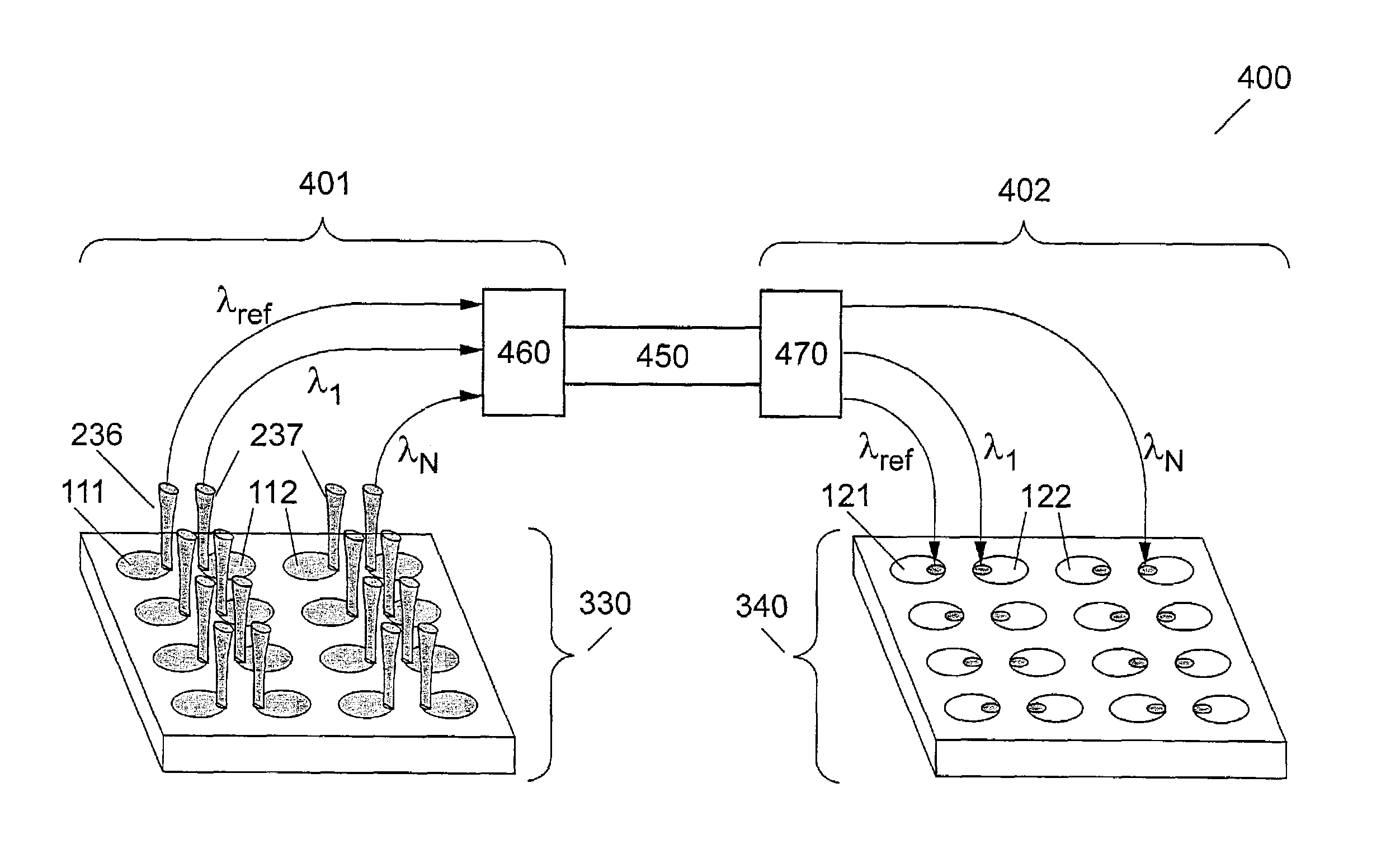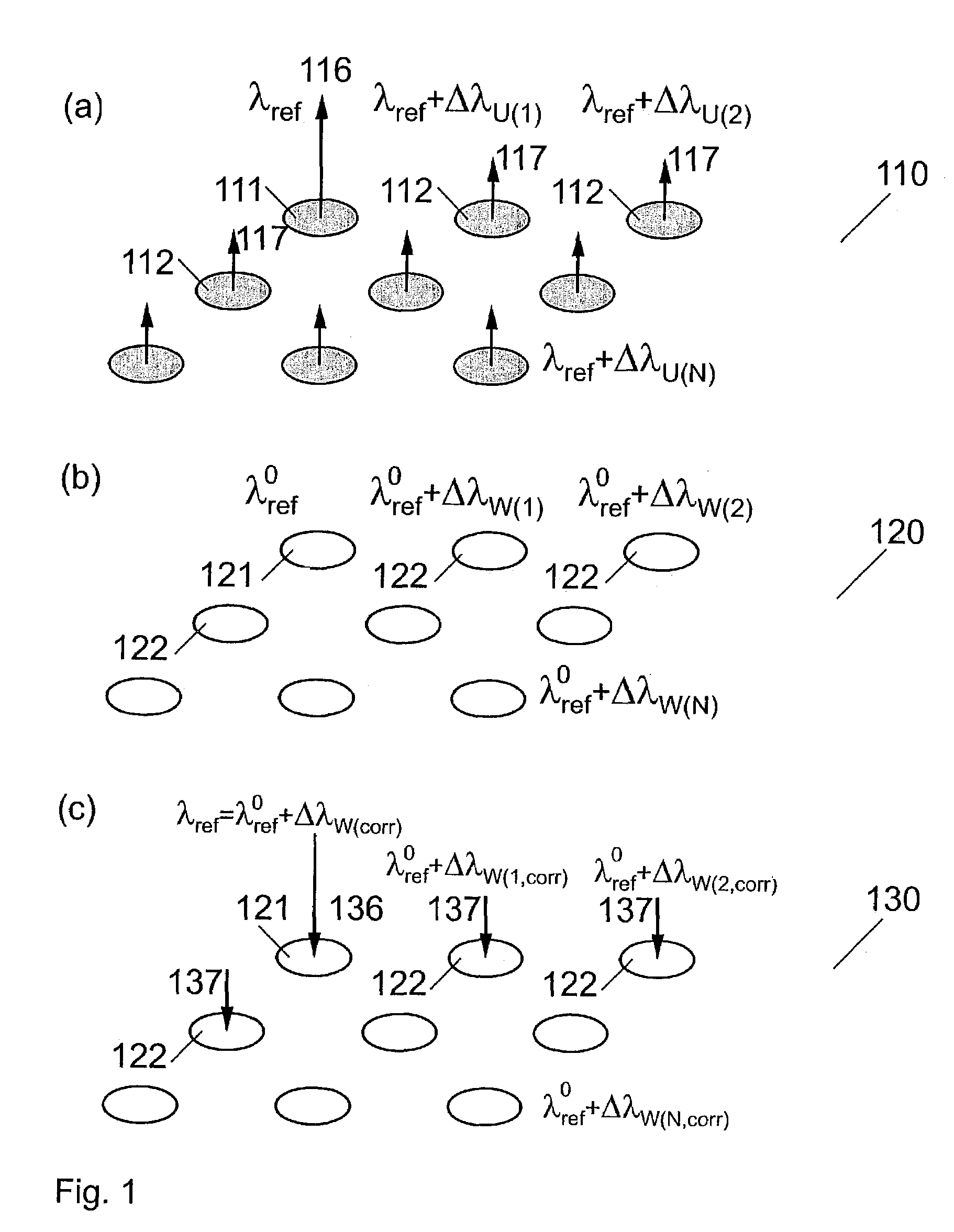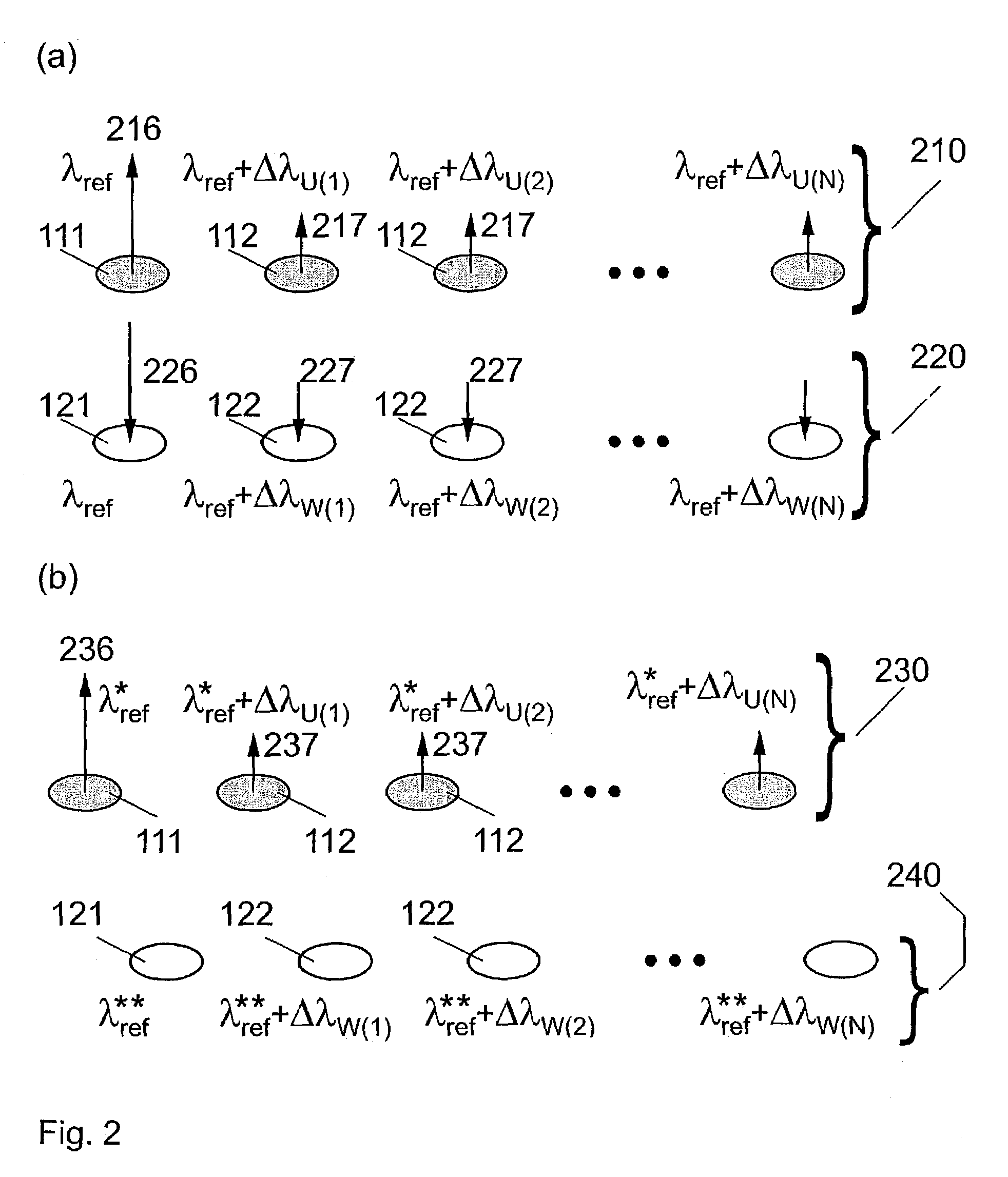Intelligent wavelength division multiplexing systems based on arrays of wavelength tunable lasers and wavelength tunable resonant photodetectors
a wavelength division and multiplexing system technology, applied in the field of data communication systems and data communication networks, can solve the problems of high cost of traditional wavelength-tunable lasers, inability to achieve conventional single-chip vcsels, temperature and stabilization, etc., and achieve the effect of precise wavelength stabilization of lasers
- Summary
- Abstract
- Description
- Claims
- Application Information
AI Technical Summary
Benefits of technology
Problems solved by technology
Method used
Image
Examples
Embodiment Construction
[0040]A wavelength-tunable vertical cavity surface emitting laser was disclosed in U.S. patent application Ser. No. 09 / 867,167, which is incorporated herein by reference. The device is based on a cavity position-dependent electrooptical effect. The vertical cavity comprises an active element, which generates light when a forward bias is applied, and a phase control element. The phase control element contains a modulator exhibiting a strong narrow optical absorption peak on a short wavelength side from the wavelength of the laser generation. The wavelength control is realized by using a position-dependent electro-optical effect. If a reverse bias is applied, the absorption maximum is shifted to longer wavelengths due to the Stark effect. If a forward bias is applied, a current is injected and results in the bleaching and reduction of the peak absorption. In both cases a strong modulation of the refractive index in the phase control element occurs. The effect tunes the wavelength of t...
PUM
 Login to View More
Login to View More Abstract
Description
Claims
Application Information
 Login to View More
Login to View More - R&D
- Intellectual Property
- Life Sciences
- Materials
- Tech Scout
- Unparalleled Data Quality
- Higher Quality Content
- 60% Fewer Hallucinations
Browse by: Latest US Patents, China's latest patents, Technical Efficacy Thesaurus, Application Domain, Technology Topic, Popular Technical Reports.
© 2025 PatSnap. All rights reserved.Legal|Privacy policy|Modern Slavery Act Transparency Statement|Sitemap|About US| Contact US: help@patsnap.com



